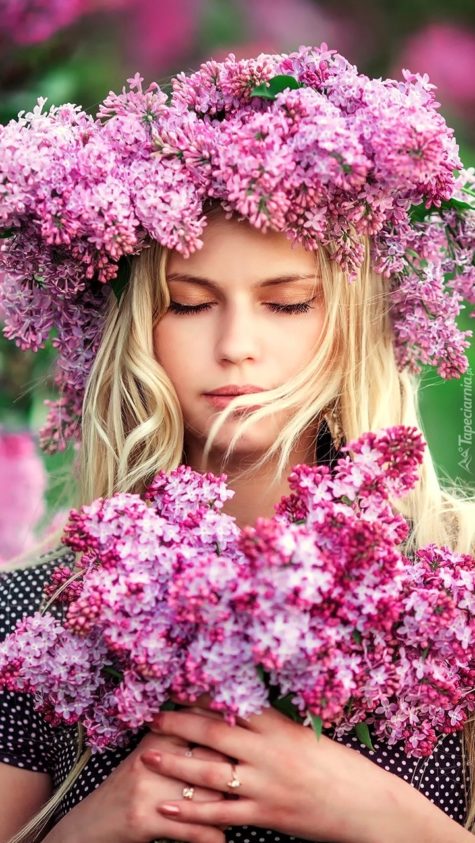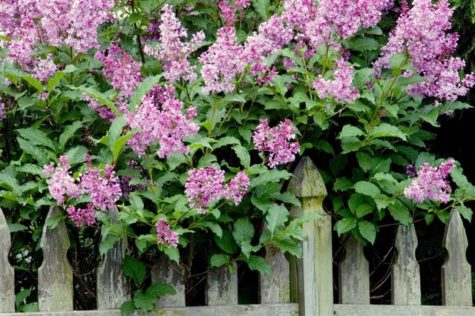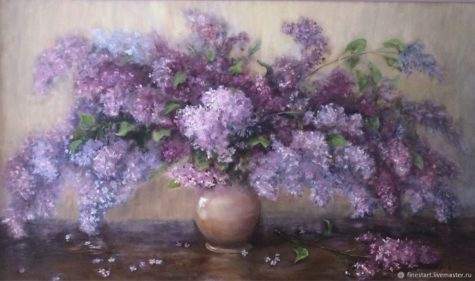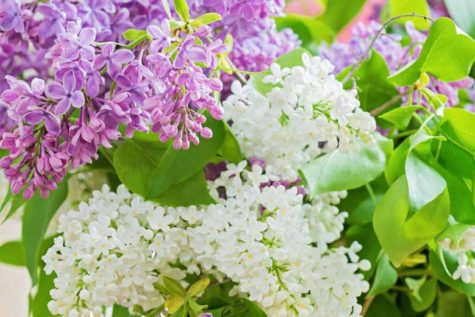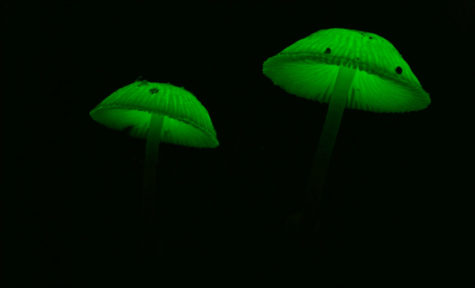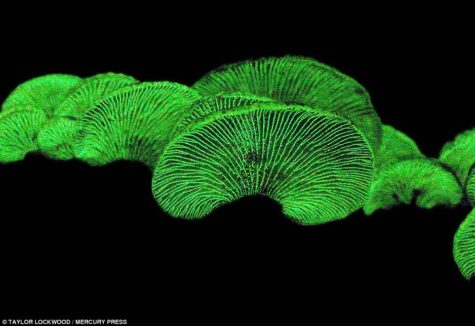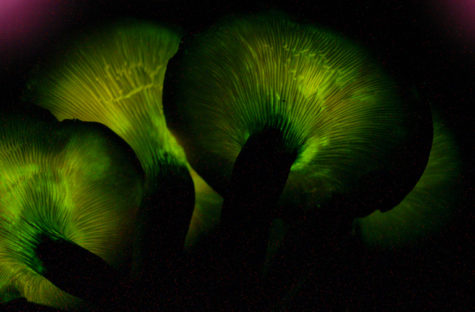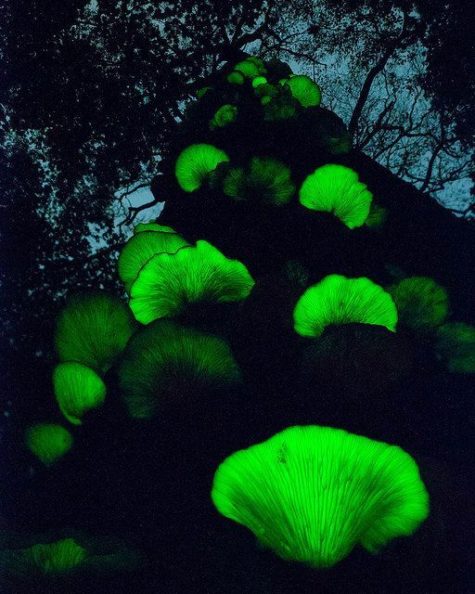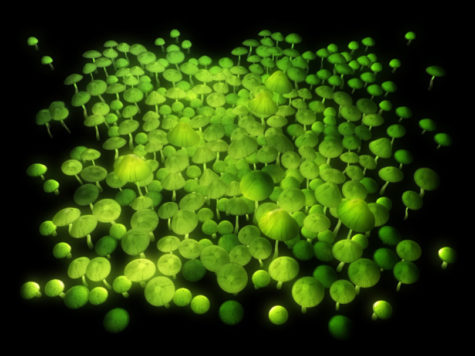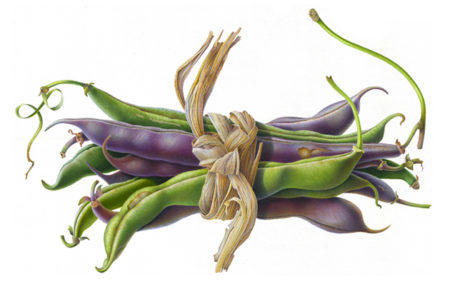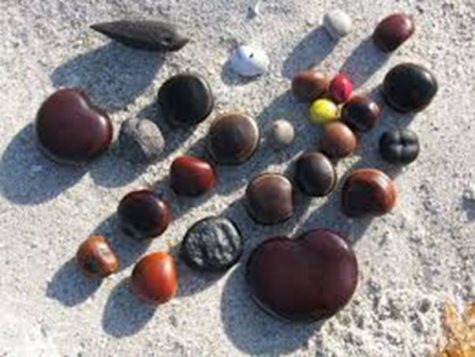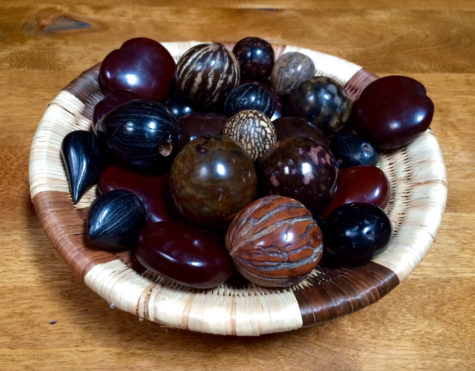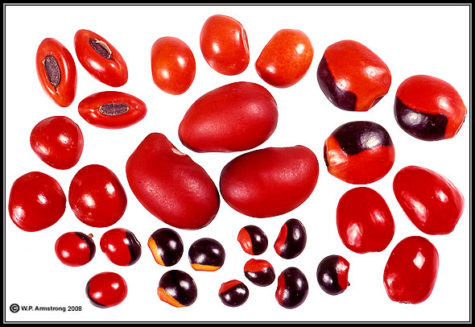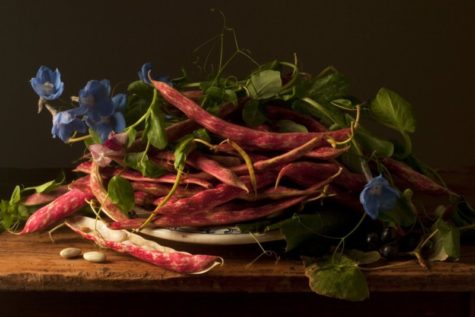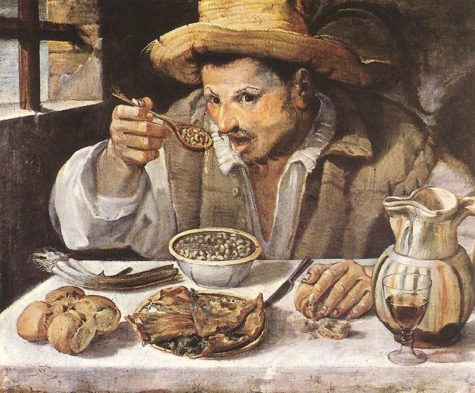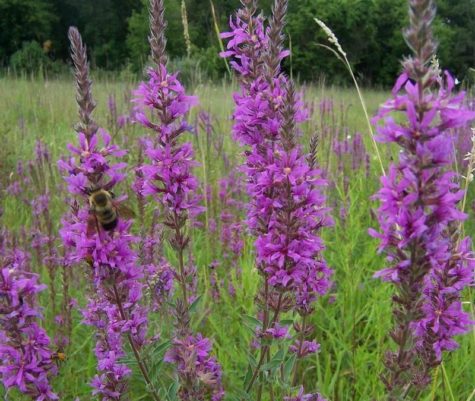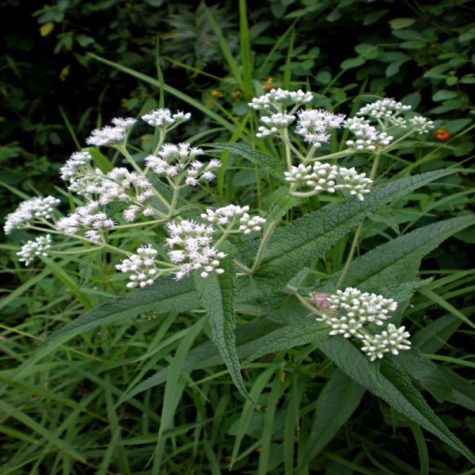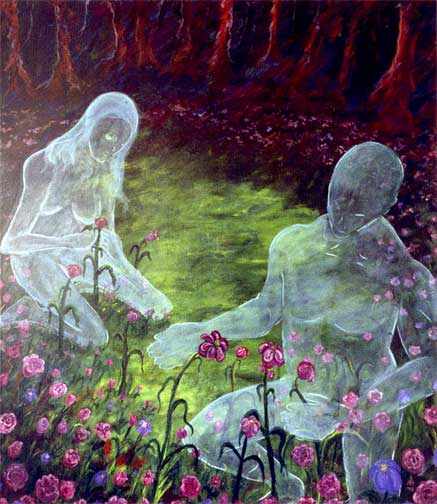Ghosts
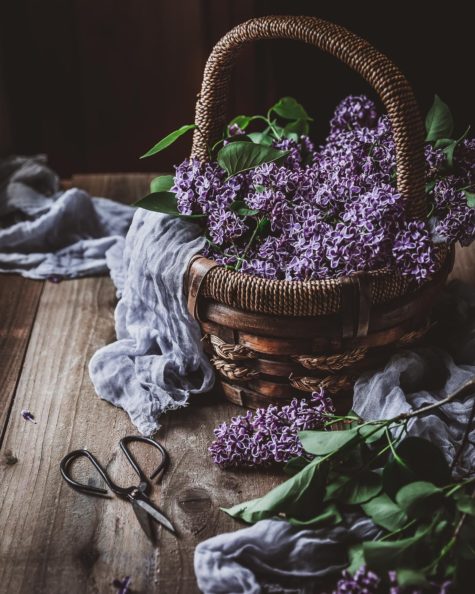
Magickal Uses
- Part used: Fresh flowers
- Planet: Venus
- Element: Earth
- Magickal Influences: Love and Purification
This is the flirt flower. It attracts love quickly although the love it brings often doesn’t last for long. Wear the fragrance or bathe in fresh lilacs when you want a fling. This flower is for fun. It is a great scent to spray in a room before parties or before meeting a date who is taking the relationship too seriously. Lilac keeps things light.
Inhale the aroma rising from the light purple flowers for internal purification. To cleanse a home, place jars of the fresh flowers in several rooms. Bathe in Lilac dew on May Day for a year of beauty.
The scent of fresh lilac flowers was once thought to drive away ghosts.
The scent of lilacs enhances a child’s educational aptitude. Here are a number of ways to use it:
- Place a drop of lilac fragrance oil on a light bulb near where a child studies.
- Place a vase of fresh lilac blossoms on the child’s desk so that the fragrance wafts over the child while studying.
- Place a table and chair outside next to a lilac bush in bloom and send the child outside to study.
Like many flowers, lilacs can be utilized in love expansion rituals. The sweet fragrance of these seasonal blooms brims with loving energies.
In aromatherapy the fragrance of Lilacs is recommended to patients who suffer from chronic depression and anxiety. Lilac blossoms can be added to your bath for a soothing aromatherapy remedy for stress and anxiety.
No true lilac essential oil is currently available, however lilac scents are available. They are said to bring peace and harmony. Also believed to induce “Far Memory” or the ability to remember past lives. It is also useful for inducing clairvoyant powers in general.
Lilac oil reputedly repels vampires and is certainly more fragrant than garlic. Most of the Lilac oil that is commercially available is synthetic; presumably vampires can tell the difference. If you make your own, the lingering aroma should keep the vampire out of the house as well.
A recipe for how to make your own lilac oil can be found here: Oil of Lilac
Jennifer Shepherd at the Lipstick Mystic recommends using the seasonal qualities of lilacs as a way of jump-starting your life. She says,
“Since lilac tends to be one of the earlier flowering plants each spring-time, it carries with it some of the same spiritual energies of other “early bloomers” like daffodils and forsythia. Lilac has the same quality of being able to push or penetrate through harsh, heavy “winter” energies.
So if you’re seeking some kind of significant breakthrough in your life, and you want a little extra kick or punch to help get you through, connecting with the energies of lilac can be very helpful. Smelling the fresh flowers on the bush or bringing a few blooms inside to enjoy is the best way to connect with this special plant.”
Lilac blossoms are natural astringents–they dry things out. Place a cup or two of slightly wilted flowers in a jar, and fill with witch hazel. Allow it to steep for a few days, and then strain out the flowers. Use the lilac and witch hazel blend as a facial toner, to keep your skin looking healthy and fresh all summer. Dab a bit on your wrists when you’re getting ready to go out, to attract new love your way.
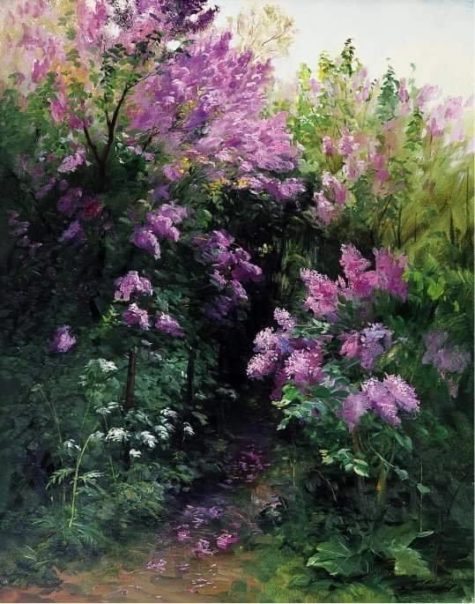
The Lore of Lilacs
The trees were respected by Orthodox Christians and the plant’s Greek name “pashalia” is derived from “pasha” which in Jewish means “passage” as they were considered to drive ghosts away instantly. The lilac tree is also linked with reincarnation.
One of the plant’s secrets is that the flowers do not fade under hot water. Lilacs are said to remove ghosts, aid the exploration of past lives, and bless the passages of life, both birth and death. Purple lilacs are the symbol for the first emotions of love. If the blossoms are strewn about it is said they can ward off evil.
Lilacs have a history of promoting clairvoyance, divination, peace, harmony and creativity. Lilac tonics were probably first introduced in Henry 8th time. They are called a harbinger of spring. White lilacs are a symbol of innocence.
In some parts of England, it is considered unlucky to bring Lilac, especially white Lilac, into the house. The purple and red varieties are usually less feared, but even they are sometimes excluded from house decorations as bringers of misfortune.
In the 1960’s, a florist in Oxford England strongly advised a customer not to buy white Lilac for a friend in the hospital on the grounds that many people thought it foretold death if brought indoors. He did not know why this should be so, only that it was quite commonly believed. In fact it is almost certainly due to the widespread association of death and misfortune with “drowsy-scented” flowers, and also with those which are white.
An interesting detail about the Lilac tradition is that it is found only in some English districts, especially in the midland counties, and quite unknown elsewhere.
It is lucky to find a five-petaled lilac blossom of any color. Along the Welsh border, Lilac trees are said to mourn if any of their kind are cut down, and to be flowerless in the following year.
From the Cincinnati Enquirer 1 August 1900, we have this fun little tidbit:
“She who wears the lilac will never wear the wedding ring,” runs the old proverb, and although the scent of the flower is sweet and its tints are fresh and universally becoming it is contraband among the village maidens in England.
A single boutonniere of lilac has been held responsible for solitary spinsterhood. For the same reason mothers with marriageable daughters never allow a jug of the sweet smelling blossoms inside the house. It may stand on the outside window sill, but “there’s no love luck about the house” when there are lilacs in it.
To give one’s sweetheart a spring of the flower is the death blow to the most secure of engagements. White lilacs are even more fatal to love affairs than the colored ones; they are, in fact, as ominous as an opal ring. Love, however, laughs at artificial flowers, and only the real tree grown one can come between the lover and his lass.
Stony-hearted bachelors sometimes sport a lilac boutonniere as a charm against feminine blandishments. Londoners do not share the superstition, and use the flower freely for decoration, regardless of the unlucky attributes.
Queen Adelaide, consort of King William IV, was apparently unafraid of lilacs, although, to be fair, she was already married when she commissioned her famous Honiton lace dress whose flower patterns, included lilacs, spelled out her name.
The meaning of the lilac flower has diversified throughout the ages. Lilacs originated in Southeastern Europe and are a popular part of the Mediterranean culture. They are frequently associated with the Easter holiday, which occurs during the peak of its bloom time.
Lilac meanings vary throughout different cultures and time periods.
- The Celtics regarded the lilac as “magical” due to their incredibly intoxicating fragrance.
- During the Victorian Age, the giving of a lilac was meant to be a reminder of an old love. In fact, widows were often seen wearing lilacs during this period.
- In Russia, holding a sprig of lilac over the newborn would bring wisdom.
- In the United States, the lilac is the official state flower of New Hampshire and represents the ‘hardy’ nature of its people.
Because lilacs have one of the earliest bloom times, they symbolize spring and renewal. Lilacs also symbolize confidence, which makes them a traditionally popular gift for graduates. There are many meanings that lilacs have that can best be classified by color.
- White lilacs symbolize purity and innocence.
- Violet lilacs symbolize spirituality.
- Blue lilacs symbolize happiness and tranquility.
- Magenta lilacs symbolize love and passion.
Lilac, the color for which this flower is named, is a light purple that symbolizes a first love.
Although various colors of lilacs have different meanings, the lilac has always had a strong association with love and romance throughout history.
Dreaming About Lilacs
Lilac in a dream is a sign of future changes in personal life, the anticipation of big feelings and an exciting love affair.
- White lilac personifies purity, sincerity, sensuality, the birth of affection.
- Violet lilac is a longing for love experiences, yearning of the heart; awakening of romance.
To dream of a blooming lilac is a sign of positive emotions, receiving pleasant news or surprise.
Standing under lilac bush in a dream promises a person a frivolous sexual adventure, which will very quickly exhaust itself, and feelings will evaporate before they turn into something serious.
Miller’s dreambook positioned dreams about lilac mainly as a good sign, foreshadowing love experiences, romance, a surge of sensuality. Flowering lilac shrub reflects the kind and open attitude of people around them to the dreamer, trust and sympathy. Tearing lilac shows a greater likelihood to achieve the desired.
A bouquet of lilac is a sign showing opportunity to find something new about your beloved person, to have sincere conversation. The image promises a romantic acquaintance for single people, but this union will not be long-lasting.
For people who have been married for a long time, a bunch of lilac flowers speaks about the revival of long-forgotten romantic feelings between spouses – sexual desire will be restored and a seemingly past, withering passion will appear.
Some dreambooks interpret ambiguously dreams of a lilac branch. To see a torn off branch in a dream is a symbol of illusion, deceptive hopes that will never be realized. One should beware of strangers who sincerely offer friendship at first glance. To see the blossoming branch of a lilac bush from a window in a dream promises pleasant pastime and an unexpected gift.
To see lilac in a dream and feel its scent means an extraordinary, almost mystical attraction to a person of the opposite sex. Dream interpretation advises not to succumb to this feeling (which will be very difficult to do), because the fruits of such intrigues will remind of themselves more than once, and can easily ruin the life of even the most self-confident person.
If the dreamer happened to pick the fragrant lilac in a dream, it means he will attract close attention of a person whom he likes for a long time.
To dream of a lilac flowers represents feelings about how beautiful it is to notice never fearing a sense of accomplishment in something that isn’t dependent on anything else. A sense of accomplishment in something that nobody else wants to do that always cares about your feelings. Feeling good noticing yourself successful from being self taught. Feeling good about your children having grown up to be independent never needing you for anything.
Sources:
- Encyclopedia of Herbology
- Mrs Daffodil Digresses
- Magical Aromatherapy
- The Encyclopedia of Superstitions
- Encyclopedia of Magickal Ingredients
- Magical Herbalism
- Element Encyclopedia of 5000 Spells
- FTD by Design
- Check My Dream
- What it is: Bioluminescent Fungi
- Associated with: Foxes, Fox Spirits, Will-o’-the-Wisp, Fairies
- Important: None of the bioluminescent fungi are edible. Do not eat them.
If you ever find yourself walking through a damp, dark woods at night without any flashlight, you might just witness something amazing. If you’re lucky, in the undergrowth concentrated on and around rotting logs, you’ll notice a green or blue glow. It’s foxfire, and it’s beautiful. Often foxfire looks as if the bark of a fallen log or old tree branch is glowing at night. It’s not the wood but rather what’s feeding on it that’s creating the light. With some species, it’s the mushroom cap itself that glows, in other species only the underside of the cap is luminescent.
For centuries this was called fairy fire or will-o-the-wisp and was attributed to something mystical. The oldest recorded foxfire sighting was by Aristotle in 382 BC, he thought it was a cold fire burning on the logs. The actual cause of foxfire was only discovered in 1823 when glowing beams in mine shafts were investigated.
Magickal Uses
Foxfire in the wild is magickal all by itself, and can indicate a message from the underworld, or a warning to be careful where you are going. It not easy to come by, and if you are lucky enough to have a place in the wild where you can see it, be very protective of the area.
If you acquire some foxfire, use it to set a magickal mood, to bring the energy of the fairy realm to a dark moon ritual, or to make contact with Fox Spirits, ghosts, and other creatures of the night.
The compound in the fungi that creates the light is called Luciferin (meaning light bringer), which brings to mind thoughts of Lucifer and the underworld. If you are involved in dark magick, foxfire would definitely be an ingredient that could be added to rituals and spells, particularly for magickal workings designed to lead someone astray.
How can you experience foxfire for yourself?
The best way to see foxfire is in old, moist oak woods where plenty of big dead limbs and old stumps litter the ground. Foxfire can be seen in the spring as the forest floor warms. The light is so dim, many people never notice it. To see foxfire, pick a night with no moon. Keep away from areas with artificial lights and do not use a flashlight. Your eyes must be well adjusted to the dark.
The aim is to be out on a dark night, with a mild temperature and to walk in woods that are damp but not wet. Think of foxfire as Goldilocks — not too hot, not too cold, not too wet, not too dry. When conditions are just right, and you’re in just the right spot with your eyes adjusted to the dark, the forest around you will glow — and it’s magical.
According to Carol Probets, a nature guide from the Blue Mountains of Australia, “If you learn to recognize it in the daytime, it’s much easier to find it in the nighttime rather than wandering around in the dark.”
Amazon sells bioluminescent fungi kits for those who want to grow their own. The Glow in the Dark Mushroom Habitat Kit features Panellus Stipticus (Bitter Oyster) spores along with whatever is needed to get them growing. Or you could explore all the other glow in the dark fungi available for sale online.
A personal experience with Jack-O-Lantern (Omphalotus illudens) luminescent mushrooms:
A couple of years ago, I went out at night to sit with a clump of jack o’lanterns around a stump in my neighbor’s lawn. It took about 10 minutes for my eyes to be able to make out the glow. During that time, I counted shooting stars, meditated on the answer to the ultimate question (42), and listened to night sounds. Among those sounds was a persistent shushing, coming from all around me. When I had basked long enough in the glow and switched on my flashlight, I found I was surrounded by hungry giant slugs, slithering softly through the grass as they homed in on the Jack O’Lanterns, which apparently don’t upset slug tummies at all.
A teacher at Cornell University talks about Bitter Oyster (Panellus stipticus).
I have often sent students home with hunks of wood bearing this fungus. If you are prone to wakefulness in the middle of the night, as I am lately, P. stipticus is a great thing to have on your bedside table. Waking up and finding its glow on your nightstand is a sure way to erase the day’s worries, dispel night terrors, and forget that strange clunking in the basement. You’ll need a fresh northeastern specimen–nice pliable fruiting bodies. It’s handy to know that fairly crispy, dry specimens will revive well if you wet them. I run them under the kitchen tap, and wrap them in wet paper towel. When I go to bed, I peel back the paper towel, and leave their hunk of wood sitting damply in a dish until I awake and find them glowing steadfastly beside me.
While most fungi don’t possess this ability, there are some 71 known species of bioluminescent mushrooms contained within three groups— the Omphalotus, Armillaria, and Mycenoid lineages. Their degrees of light intensity differ; while many of the Australian species are very luminous, North American species tend to emit less light and require adjustment to the dark before they can be seen. Some don’t glow brightly enough for their light to be visible to the human eye – rather, the glowing effect shows up after a long exposure when taking a photograph.
Here is a short list of a few of the more well known bioluminescent mushrooms, along with a little bit of information about each one:
- Armillaria mellea – Honey Mushroom – The most widespread of the bioluminescent fungi because it populates forests throughout North America and all the way over to Asia.
- Armillaria fuscipes – Honey Fungus – Plant pathogen that causes Armillaria root rot on Pinus, coffee plants, tea and various hardwood trees. It is common in South Africa. The mycelium of the fungus is bioluminescent.
- Mycena chlorophos – Night-light Mushroom or Green Pepe – Glows brightest at one day old, around 80 degrees Fahrenheit. Once the caps open, time is limited, and the bioluminescence fades.
- Mycena haematopus – Bleeding Fairy Helmet – One of the prettiest bioluminescent mushrooms. It can be found throughout Europe and North America. They get their name from the red latex they ooze when they’re damaged.
- Mycena luxaeterna – Eternal Light Mushroom – A rainforest fungus that can only be found in Brazil. Their hollow stems glow in the dark.
- Neonothopanus gardneri – Flor de Coco – One of the world’s brightest bioluminescent fungi, found on decaying palm leaves, native to Goiás, Piauí and Tocantins states in Brazil.
- Omphalotus illudens – Jack-o’lantern – Found in hardwood forests in eastern North America, only its gills glow.
- Omphalotus nidiformis – Ghost Fungus – The best time to look for it is in autumn, particularly after a bit of rain. It occurs in Australia, Victoria, Tasmania, generally growing on tree trunks and stumps.
- Panellus pusillus – Takes over tree branches in large groups. The result is like sparkling string lights in the dark forest. It has been recorded in Australia, Asia, Europe, North America, and South America.
- Panellus stipticus – Bitter Oyster – An unassuming fungus by day and a striking beauty by night. Its gills glow under their own power. Though this fungus occurs in Europe and in the Pacific Northwest , individuals found outside the northeast don’t glow.
- Roridomyces roridus – Dripping Bonnet – This species can be bioluminescent, and is one of the several causative species of foxfire.
- Xylaria hypoxylon– Candlestick Fungus – Typically grows in clusters on decaying hardwood. The fungus can cause a root rot in hawthorn and gooseberry plants.
In Scandinavia, mycelia-infested bark was used as a sort of night light during the long winter nights. The practical uses of these mushrooms extended to other areas of the globe as well; in the late 17th Century in Herbarium Amboiense, Dutch physician G.E. Rumph commented on how Indonesian natives used bioluminescent mushrooms as primitive flashlights.
Sources:
Many legumes have seeds, called peas or beans, that are lucky. There are also pasture and tree legumes whose leaves and seeds are carried for luck. There is quite a lot of magick and lore surrounding these little packages of energy.
- Ruler: Mercury
- Type: Vegetable, seed
- Magickal form: dried, raw, cooked
Use beans to appease the spirits of the dead. Throw some around the outside of the home if a ghost or poltergeist is bothering you. Beans inspire creativity and communication and can be carried raw in a pouch or cooked and eaten for inspiration.
Here is a list of the different types of beans and their specific properties:
- Black turtle beans help to jump hurdles and make important decisions.
- Butter beans reduce stress.
- Canary beans bring happiness and success in the arts.
- Cow or black-eyed peas bring luck and increase psychic vision.
- Cranberry (October) beans attract new opportunities.
- Fava beans bring power, and make wishes come true.
- Garbanzos (chickpeas) help beat the competition.
- Great northern beans bring discovery and insight; they also help to protect plans and keep them secret.
- Green baby lima beans bring new income.
- Green split peas are for money or health.
- Green pigeon beans represent resourcefulness and money.
- Large lima beans allow expansion and financial growth.
- Lentils bring peace and financial security.
- Navy beans increase strength and determination.
- Oval white beans protect assets.
- Pink beans bring confidence and romance.
- Pinto beans open channels and create action and movement.
- Red kidney beans represent wisdom, love, and healing.
- Roman beans bring power and precision.
- Small red beans provide energy and lust.
- Speckled lima beans create networking opportunities.
- Tonka beans help in romance, often found in love-drawing mojo hands.
- Whole green beans attract money.
- Yellow split peas bring luck and fame.
Two legumes are widely utilized in rituals to cause wishes to come true. The Fava bean is for general good luck wishes, and the Tonka bean is for love-drawing wishes.
Sea Beans
Exotic to the eye, drift seeds, or “sea–beans” are actually seeds from common trees and vines that grow in the tropics. The beans fall from the parent plant, into streams and rivers, to drift with the ocean’s currents until being washed onto a shore thousands of miles from where they once grew. Floating in the sea by the thousands, only the hardiest endure long voyages on ocean currents which may finally bring them to rest on foreign shores. Sea–beans are known as symbols of good luck and longevity.
Sea beans can include the following:
- Sea Hearts
Heart shaped beans such as Entada gigas found on northern Atlantic shores, and Entada phaseoloides and rheedii from the southern Pacific. Sea Hearts are produced in huge, hanging bean pods, up to six feet long. Sometimes they are found with imprints and lacerations, caused by the teeth of fish and mammals during their voyage. They are impervious to salt water, even after floating in the ocean for several years.
These beans have been fashioned into all sorts of trinkets and useful objects. Sailors carried sea hearts as good luck charms to protect them from sickness and to ward off the evil eye. Seeds were sometimes cut in half, the contents removed and the woody seed coats hinged together. Hollowed out seeds were commonly used in Norway and Northern Europe for snuff boxes, match boxes and lockets.
It is said that a sea heart (also known as fava de Colom) inspired Christopher Columbus to set out in search of lands to the west.
- Sea Purses
Purse shaped beans such as Dioclea sp. found on Atlantic beaches, and the elusive Australian Dioclea hexandra. Coveted by collectors, Sea Purses and Saddle Beans (Dioclea sp.) are one of the rarest and most colorful of all sea beans found on any beach. Distinct color variations range from butterscotch to solid black.
It was originally grown in Asia, but has drifted to islands in the Caribbean and Central and South America, reproducing there. They are found growing on the Hawaiian Islands where they may have also drifted or, like so many other species, introduced by people.
- Hamburger Beans
Such as Mucuna sloaneii, urens, and elliptica along with a few south Pacific natives, Mucuna gigantea and membranacea, so called because they look a lot like this popular sandwich.
Seeds from the Mucuna vine are called Hamburger Beans or True Sea-Beans in the United States. In Mexico, they are known as Ojo de Venado or Deer’s Eye. There are hundreds of varieties growing in tropical regions around the globe. They can be brown, red or brindle shades of red and brown.
These beans are members of the pea and bean family that contain toxic, hallucinogenic or medicinal alkaloids and therefore figure in good luck charms.
In the case of the Mucuna bean, the mature beans are considered both aphrodisiac and very protective in Mexico and Central America against the evil eye. Nowadays they are carried for good luck.
- Vine Seeds
Every collector’s favorite, the Mary’s Bean (Merremia discoidesperma) is a rare find among drift material anywhere in the world and highly prized by drift seed collectors. Named after the Virgin Mary, it is also called the crucifixion bean because of a cross etched on one side of the seed, leading to it being used as a talisman and many superstitions and legends are connected with it.
A woman in labor was assured an easy delivery if she clenched a Mary’s bean in her hand, and the seeds were handed down from mother to daughter as treasured keepsakes. In northern Europe the Mary’s bean was a special find to pious beach-combers. The seed had obviously survived the ocean and they felt it would extend its protection to anyone lucky enough to own one.
In addition to its unique appearance, it holds the record for the longest recorded drift: 15,000 miles., along with some Caribbean Little Marbles and Florida native Bay Beans.
Bay beans (Canavalia rosea) are one of the most common and plentiful of all sea-beans growing abundantly in dunes worldwide. The vines and their pods grow low along the sand and are easy to spot on the berm with long flower-studded runners. These vines protect the dunes by stabilizing the sand along with other plants. The coloration of the beans vary from mottled and swirly browns to different shades of beige.
Little Marbles (Oxyrhynchus trinervius), also known as Black Pearls, are plentiful in Nicaragua, Costa Rica and Panama. The parent plant is an aggressive climber in the right conditions. A rare find on North American beaches, as they are not good floaters and few get very far from their parent plant.
- Shrub Seeds
Shrubs that produce these beans are some of the most resilient plants found. They came from parents growing in inhospitable conditions such as drainage ditches, along barbed-wire fencing and embedded in hard-pack soil with drainage that would kill anything else.
Recurved spines growing on their branches protect the precious seeds from animals that probably shouldn’t be eating them. They include Coral Beans (Erythrina sp) and Grey Nickars (Caesalpinia bonduc) and the less aggressive Brown Nickar (Caesalpinia major).
Grey nickars (aka Sea Pearls) found on east coast beaches of Florida may have washed in from the Gulf Stream or are from plants growing locally. The name nicker comes from an old English word meaning marble. Nickernuts are used for playing pieces in board games the world over.
Far less common than Grey Nickarbeans, and a bit larger, the Brown Nickar comes from similar plants, but have the color of light milk chocolate.
- Tree Seeds
All trees produce seeds, but not all are considered beans, much less sea-beans. More often the seed pods have flotation abilities, though short as they are since salt water starts to break them down as soon as they get wet.
Guanacaste (Enterolobium cyclocarpum), one of the most beautiful beans of the New World tropics comes from a huge canopy tree. It is a fast growing species and one of the largest trees found in Central America.
The word Guanacaste, which is also the name of the Costa Rican province of Guanacaste, is of Nahuatl origin and means “ear tree.” The coiled, leathery pods resemble the shape of a human ear. Guanacaste seeds have a distinctive brown “eye” and make some of the most striking seed jewelry.
Makha-Mong (Afzelia xylocarpa). This tree grows in Thailand, Vietnam, Cambodia, Laos and Burma in deciduous forests. In Southeast Asia, the seeds are harvested for medicinal purposes. The seed pulp can be used to make cigarettes, and the bark and seed are used for herbal medicine.
Laurelwood (Calophyllum calaba), also known as santa-maría or false-mamey, this medium-sized tropical evergreen tree is frequently used for reforestation, as a shade tree or a protective hedge. The seeds are perfectly round and coloring runs from light beige to dark brown. At certain times of the year, they can be plentiful on beaches, looking like small ping-pong balls. Polishing brings out their natural coloring.
Royal Poinciana (Delonix regia). In the Caribbean, the pods from these trees are used for fuel and called “woman’s tongue” for the rattling noise they make when the wind blows them. The empty pods are classified as sea-beans but only have a maximum flotation of about a month. The seeds are gathered from pods and fashioned into jewelry around the world.
Large brown beans
Some large brown beans are tropical species that accidentally get distributed worldwide because their pods float. Swept downstream, they make their way to the ocean before the pods fall apart, and when these “Sea Beans” wash up in Northern climes, they are carried as lucky pocket pieces.
Other large brown beans are cultivated as fodder. Their seeds are often mildly toxic, containing DMT compounds or L-dopa, but some find use in local medicine as vermifuges. Most are carried as amulets.
One exception to the “large brown beans are toxic” rule is the greenish-brown Fava bean, which is cultivated for use as a food despite the fact that some people are highly allergic to it. Fava beans are also known as Mojo Beans, or African Wishing Beans and are widely believed to have the power to make wishes come true.
Some large brown beans are drilled through and hung on a cord, often for protection.
Large brown beans are often treated in the same way as other large brown botanical curios like Buckeye, nutmeg, and High John the Conqueror – that is, they are oiled and carried in the pocket as a lucky piece or combined with other curios in a Mojo bag. Sea beans are handled in this way, and in addition to general good luck and gambling luck, being seaborne seeds, they are also said to protect from death by drowning.
Large poisonous brown beans carried as lucky pieces include the following:
- Entada Gigas: Sea heart, Sea bean
- Entada phaseoloides: Matchbox bean
- Mucuna pruriens, Mucuna spp: Cowhage, Cow-itch, Horse-eye nut, Nipay, Ojo de Llama, Ojo de Vaca, Ojo de Venado, Pica-Pica
Small Wild Red Beans and Peas
Many sub-tropical or tropical red beans or red peas are toxic and psychedelic, containing DMT or LSD-like substances. Some are fatal if eaten; others produce a visionary trance or altered state of consciousness. Although local shamans may prepare these dangerous seeds for ingestion, their most common magickal use is in amulets.
One exception to the “red beans are toxic” rule is the kidney bean or red bean well known as food. Like its white, brown, black, and spotted relatives in the Phaseolus genus, it plays an important role in edible bean ceremonies.
Small poisonous red beans crafted into amulets include the following:
- Abrus precatorius: Abrus a Chapelet, Colorine, Crab’s Eye, Jequerite, Jequirity Bean, Lady Bug Bean, Ojo de Cangrejo, Peronilla, Precatory Pea, Rosary Bean
- Adenanthera pavonina: Circassian seed, Jumbie, Jumble Bean
- Erythina spp: Coral Tree, Frijol de Arbol, Gallito
- Ormosia coccinea: Barakaro, Huayruru, Kokriki, Panacoco, Peonia, Wo-ka
- Ormosia macrocalyx: Alcornoque, Chocho Grande, Huayruru, Tento
- Ormosia nobilis: Huayuru Hembra, Mulungu, Tento
Bean Lore
Beans, like many other plants with strong-smelling flowers, are traditionally associated with death and ghosts, and have been so from early pagan times down to our own day.
In ancient Rome, edible beans were distributed and eaten at funerals. Until about the beginning of the 19th century, a similar custom was observed at some, though not all, north-country English burials. When it finally lapsed, a memory of it was preserved in the children’s couplet:
God save your soul,
Beans and all.
During the Roman festival of the dead, held in May, black beans were used in ceremonies intended to placate and ward off ghosts, and in early Greek ritual, the scapegoat who annually died for the people was chosen by means of a black bean drawn in a lottery.
In his Remaines of Gentilisme and Judaisme (1686) Aubrey mentions a charm used in his boyhood to avert evil spirits, which consisted in saying very quickly, three times in one breath:
Three blew beans in a blew bladder,
Rattle, bladder, rattle.
A very widespread country belief that persisted at least as late as the end of the last century, and perhaps later, was that the souls of the dead dwelt in the flowers of the broad bean. These flowers were still thought to be ill-omened in many districts. Old colliers in northern and midland England say that accidents in the pit occur more frequently when they are in bloom than at any other time.
Cases of lunacy are also thought to be more likely then, for the scent of the flowers is supposed to induce mental disorder, bad dreams, and terrifying visions. A Leicestershire tradition says that if any one sleeps all night in a beanfield, he will suffer from appalling nightmares, and will probably go mad afterwards.
Another very common superstition is that if in a row of beans, one should come up white, it is a death omen for someone in the grower’s family.
A well-known charm for curing warts is to rub them with the white inner lining of a bean pod, and then throw the pod away, or bury it in a secure place. As it rots, so will the wart disappear. This charm has been tried with success in Oxfordshire within the last ten years.
In Ireland, poultices made from the flowers were sometimes used to reduce hard swellings. A former use for the plant, half medical in origin and half magickal, was to make women beautiful. The pods steeped in wine and vinegar, or the distilled water of the flowers, improved the complexion, and so, according to Bulleyne’s Booke of Simples (1562) did a lotion made from bean-meal mixed with cold milk.
In Leap year, broad beans are said to grow the wrong way up. Various dates are given in different districts (in England) as the only fortunate days for setting beans (and peas) but these seem to spring less from superstition than from agricultural custom and the knowledge of local weather conditions. In the northern counties gardeners should:
Sow peas and beans on David and Chad,
Whether the weather be good or bad,
David and Chad refers to March 1st and 2nd, the festival days of St David and St Chad. Farther south, beans are set “when elm leaves are as big as a farthing,” or on certain dates in early May, often connected with local fairs. A limit to the variety of these days seems to be set by a well known rhyme which says:
Be it weal or be it woe,
Beans should blow before May go.
Edible Bean Ceremonies and Celebrations
Edible beans have had religious and magickal associations for millennia. The ancient Egyptians held the red kidney bean sacred, and thus taboo as food. The high priest of the Jews was forbidden to eat beans on the Day of Atonement. Beans were thrown to the spirits of the dead during the ancient Roman feast of Lemuria in May.
Bean soup is eaten to commemorate the dead on All Souls Day in Austria and is also a feature of Jewish mourning feasts. Bean cakes are eaten in Taiwan at the August full moon ceremony. New Year’s luckiness is associated with red kidney beans in many parts of the world including Europe, where the beans are eaten, and in Japan, where priests clap their hands and throw uncooked beans upon temple goers.
Sources:
- Encyclopedia of Magickal Ingredients
- Encyclopedia of Superstitions
- Hoodoo Herb and Root Magic
- Beach Beans – a source for sea beans
Crossroad is a symbolic term denoting the union and joining of paths. The association of the crossroad with Witchcraft goes back to ancient Greek and Roman times. Classically the crossroad symbolizes a joining of three roads, the balance of opposites, and the meeting of time and space.
In the Aegean/Mediterranean region crossroads were sacred to Hecate, Triformis, and Diana. Ovid, an ancient Roman writer, speaks of Hecate as having three faces with which to guard the crossroads as they branched out. Verro, another ancient writer, equated Diana with Hecate and stated the images of Diana were stationed at the crossroads. Other writers of the period called this goddess Artemis-Hekate, and attributed the mother goddess aspect to her.
The crossroads are likewise associated with the ancestral spirits called Lasa or Lares. These beings were originally thought to be spirits of the forests and meadows, the fairy folk, and spirits of Nature. With development these spirits became associated with the cultivated fields, and eventually the Lara became protectors of the family and home, and associated with the hearth.
Also, in the archaic Roman religion small towers were constructed at crossroads, and an altar was placed before them upon which offerings were laid. Such towers were associated with Nature spirit worship and demarcation. Possibly this may be the foundation of the concept of Watchtowers within modern Witchcraft.
Since classical times the crossroad has been a favored place for Witches to gather because of its link to Nature spirits and the moon goddess. When the symbolic crossroads were Christianized they became symbols of dread. Crossroads become the construction sites for gallows, and suspended cages that contained bodies of criminals. Also, suicide victims, who were not permitted burial in hallowed churchyards, were frequently buried near a crossroad. Then too, the Judaic-Christian Devil was said to hover near crossroads. All of this, of course, helped to defile the sacred grounds where Witches gathered.
Source: The Mystica
Heather is sacred to the Summer Solstice, the date of which varies slightly from year to year, and falling between June 20 and June 22.
- Latin name: Calluna vulgaris
- Celtic name: Ura (pronounced: Oor’ uh)
- Folk or Common names: Common Heather, Ling, Scottish Heather
- Ruler: Hestia or Vesta, Isis,
- Planet: Venus
- Element: Water
- Parts Used: herb, flowering shoots, dried or fresh flowers, or oil.
- Basic powers: For magick involving maturity, consummation, general luck, love, ritual power, conjuring ghosts, healing, protection, rain-making and water magick.
When worn or carried, this virginal flower wards off unwanted sexual advances. It essentially tones down the passions. Carry as a guard against rape. Take a bath in heather flowers, preferably during the moon’s waning phase, to help break sex addictions. Wear heather oil to bring a relationship back to a friendship.
Burn with fern to attract rain.
Add the flowers to a floor wash to bless the home. Sprinkle some around the workplace to calm down a tyrannical boss.
Heather is considered a lucky plant, and sometimes gypsies sell sprigs of it for luck. White heather is the luckiest variety, but in Scotland people have doubts about this. This is because a sprig of it was given to Bonnie Prince Charlie in 1745, and it did him no good at all.
Magical History and Associations:
Heather is associated with the sun, and with the planet of Venus. Its color is resin colored and its element is water. Heather’s bird is the lark, and its animal association is the honey bee. In ancient times the Danes brewed a powerful beer made from honey and Heather. And for centuries the heather flowers have also been a special beverage to the bee, who in return creates delightful Heather honey! Its stones are amethyst, peridot, and amertine – and it is a feminine herb. The herb is sacred to many Goddesses: Isis, Venus-Erycina, Uroica, Garbh Ogh, Cybele, Osiris, Venus, Guinevere, and Butes among them.
White Heather was considered unlucky by Scottish loyalists because of its connection with the banishment of Bonny Prince Charles. Heather is the home to a type of Fey called Heather Pixies. Like other Pixies, the Heather Pixies have clear or golden auras and delicate, translucent wings. But these faeries are attracted specifically to the moors and to the Heather which covers them. They are not averse to human contact, but they don’t seek them out. They have a pranksterish nature.
Magickal usage:
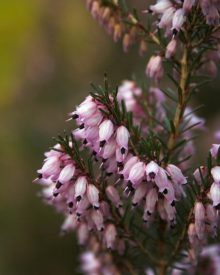 Heather is used for magick involving maturity, consummation, general luck, love, ritual power, conjuring ghosts, healing, protection, rain-making and water magick. Charms made with Heather can be worn or carried as protection against danger, rape and other violent crimes.
Heather is used for magick involving maturity, consummation, general luck, love, ritual power, conjuring ghosts, healing, protection, rain-making and water magick. Charms made with Heather can be worn or carried as protection against danger, rape and other violent crimes.
This flower represents good fortune and Heather can also be carried as a lucky charm. It was believed that wearing the blossom associated with your month of birth would bring exceptionally good luck – therefore people born in the month of Heather (August) should carry White Heather, for even better luck throughout the year.
Legend has it that a gift of white Heather brings luck to both the giver and the receiver, whereas red Heather is said to have been colored by heathens killed in battle by Christians, so is less lucky.
Heather is associated with secrets from the Otherworld. A sprig of white Heather placed in a special place of silence and meditation has the power to conjure ghosts, haints or spirits.
After picking a piece of white Heather at midnight, place it in a glass of river water in the darkest corner of your home. Sit and think of a departed loved one and it is said that the loved ones shadow will visit you.
Heather is said to ignite faery passions and open portals between their world and our own. Heather represents solitude because it thrives in wide open spaces, and Faeries who enjoy living in such undisturbed places are said to feast on the tender stalks of Heather. The Fae of this flower are drawn to humans who are shy.
Heather is useful for Solitary healing work (going within). Heather, if used along with Mistletoe, creates powerful healing medicine in both spiritual and physical aspects.
Heather can be used at Midsummer to promote love – carry red Heather for passion or white Heather for cooling the passion of unwanted suitors. If you give someone a gift of Heather it means: ‘Admiration’. A charm bag filled with Heather can be carried for decreasing egotism or self-involvement.
As a water herb, Heather is very useful in weather magick. When burned outdoors with Fern, the herbal smoke of Heather attracts rain. Bouquets of Heather and Fern can also be dipped in water to call rain.
Recommended Reading:
- Year of Moons, Season of Trees
- Tree Medicine Tree Magic
- A Druid’s Herbal
- Celtic Astrology
- Glamoury: Magic of the Celtic Green World
- The Book of Druidry
Source: dutchie.org
- Latin names: Lythrum salicaria
- Common names: Spiked loosestrife, Purple lythrum, Flowering Sally
- Gender: Feminine
- Planet: Moon
- Element: Earth
- Parts Used: Flower, leaf and stem, root
- Powers: Peace, protection
Magical Uses:
Placed in the corners of each room, this herb restores harmony and brings peace. Give to a friend to help settle an argument. Brings about protection and peaceful energies when placed in the home.
This plant was considered most powerful when gathered on the Summer Solstice. One could control demons and troublesome spirits with the root if the following words were chanted over it before a sacred image:
Tear-weed, tear-weed
You have wept long and much but gained little.
May your tears not drown the open field
Nor your cries sound over the deep blue sea.
Frighten off the demons and the witches!
If they do not submit to you,
then drown them in your tears!
If they run from your glance,
throw them over cliffs or into pits!
May my words be firm and strong
for hundreds of years!
Information collected from various sources
- Common names: Thoroughfwort, White Snake Root, Agueweed, Indian Sage
- Scientific name: Eupatorium perfoliatum
- Element: Water
- Planet: Saturn:
- Parts Used: Leaf
Boneset guides ghosts elsewhere, attracting protective, benevolent spirits instead. Boneset may also be used to protect people and animals from “ghost sickness,” the illness that some believe may emerge after extended contact with the dead.
The most potent boneset is found growing on or near graves. Supplement it with white pine for added enhancement.
Hang fresh boneset branches over doorways, or burn young boneset branches and twigs within a cauldron to drive away existing ghosts.
In addition to it’s ghost busting power, boneset opposes unnatural illness and snakes.
To counteract occult poisons they have been fed, folks rub dry boneset leaves all over their body, then take the leaves outdoors and burn them with a holy or purifying incense.
Brew boneset leaf tea and bathe in it to get rid of enemy tricks that have affected your health. Boneset can also be used to purify a sickroom by sprinkling it onto the floor and then sweeping it out the front door.
Burn boneset in an Incense to balance the energies of a space or to ground and focus your energy. Added to an Elixir or Philtre, boneset promotes health. Mixed with angelica and added to the bath, boneset is excellent for ritual cleansings.
From: The Element Encyclopedia of 5000 Spells
And: Hoodoo Herb and Root Magic and other sources
Various botanicals are said to discourage the presence of ghosts, especially rue and garlic. Here is a list of more botanical ghost busters and how to use them:
A strong scent of real carnations discourages and pacifies ghosts. Synthetic scents will not have the same effect. The best method is to strategically place bouquets of carnations replacing them as their aroma fades.
Hawthorn repels evil ghosts, while permitting the entry of helpful souls. Maintain a barrier of living hawthorn bushes and trees outside the home or bring branches within; the catch to the latter plan being that hawthorn is among the plants most associated with Fairies. Do not break off a branch without first seeking permission from Fairies, lest ghosts become the least of your problems. Branches found already fallen may be considered a gift and safely retrieved.
Boneset guides ghosts elsewhere, attracting protective, benevolent spirits instead. Boneset may also be used to protect people and animals from “ghost sickness,” the illness that some believe may emerge after extended contact with the dead. The most potent boneset is found growing on or near graves. Supplement it with white pine for added enhancement.
Hang fresh boneset branches over doorways, or burn young boneset branches and twigs within a cauldron to drive away existing ghosts.
To prevent hauntings, surround your home with living bean plants. Not only do beans repel ghosts but allegedly, the plants sing to wandering ghosts, guiding them to the next realm. If you’d like to hear these songs, a shamanic art, sit under the vines while they’re in bloom. Meditate or allow yourself to fall asleep.
Burn dried powdered bistort to banish ghosts, wafting the fragrance as needed.
Fennel can be used to ghost-proof individual rooms or an entire building. It only works on some ghosts but may be worth trying. Stuff keyholes full of fennel to prevent ghosts from entering the room. It also stops them from leaving, so if the ghost is already in the room, it may be trapped.
According to Hildegard of Bingen, ghosts hate pine trees and avoid places where they grow. If it’s not possible to surround your home with living pines, bring small living trees within it and situate them strategically.
Tiger lilies planted near doors and windows allegedly prevents the entry of ghosts.
If a ghost has taken up residence in your home or within another building, hanging alyssum up in every corner of a house will exorcise it.
A wreath of fresh bay laurel leaves posted on your entrance doors signals “No Trespassing” to ghosts. To provide relief from destructive and mischievous ghosts and poltergeist, maintain fresh bay laurel branches and /or leaves within the home. Replace them as their green color fades.
Fumigating an area with camphor and mint is used to send unwanted ghosts in search of new housing. One application may not be sufficient, however. Use repetitions of mystical numbers for reinforcement. Repeat for three, seven, nine, eighteen, twenty-one, or twenty-seven days as needed.
Sprinkle a strong infusion of bayberry inside and around the perimeter of a house to exorcise existing ghosts and repel new ones.
Make a decoction of angelica roots or pour boiling water over the dried, powdered root to make an infusion. Sprinkling this within and around the home is an Iroquois recommendation for exorcising and preventing ghosts.
